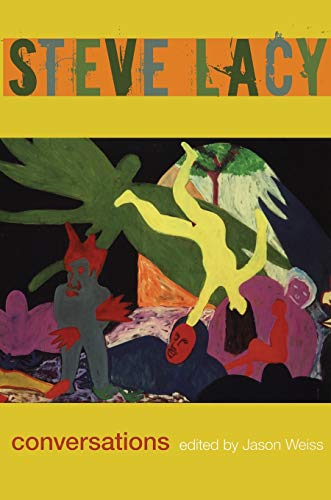Home » Jazz Articles » Book Review » Steve Lacy: Conversations
Steve Lacy: Conversations
 Conversations
Conversations Jason Weiss, Ed.
Softcover; 289 pages
ISBN: 0822338157
Duke University Press
2006
As a student of Art History a few years ago, I was always fascinated at the depth that books of artists' writings and interviews reached. Richard Serra, Donald Judd, Jackson Pollock, Michael Snow—no matter how obscure the artist seemed to be, the intrepid researcher could be sure to find a text full of notes, articles, interviews and treatises to help one form a new angle. But in researching improvisation and concerns of process and method as well as history, I was struck by the dearth of similar texts on jazz musicians. Editor Jason Weiss has changed the academic landscape of jazz with Steve Lacy: Conversations, the book I always wanted but never had. Weiss's text includes a huge amount of interviews never published in English, in addition to the usual suspects (Corbett, Ratliff, Derek Bailey, and the Wire). Conversations also contains rare photographs, scores, liner notes and free-association jottings to flesh out the complete package.
Lacy's knowledge of the people and personalities that made the scene has always been well-documented, and Conversations is littered with mention of items like Louis Moholo's hand-painted Bob Thompson drums, quotes from Jean Dubuffet and such a timely image as that of Aebi hurling Lao Tzu leaflets in protest at a WBAI Free Music Store audience while Lacy and Richard Tietelbaum improvised. Though his work with Cecil, Monk and his long-lived sextet are given credence, the significance of his work in Rome with Musica Elettronica Viva and a late '60s septet he had in Rome are also given their proper due. But if there is one concept I could have had access to when I was doing my own research on Lacy, it is roba—the Italian catch-all for any material, thing, or situation one may find oneself involved with. As titles like "Scraps, "Note, or "Staples allude to, the material of experience is what Lacy's music comes from, more than from Monk or Ellington—and like Monk and Ellington, he works from and with roba.
< Previous
I Concentrate On You
Next >
Kind Of Blue & Pink
Comments
Tags
For the Love of Jazz
 All About Jazz has been a pillar of jazz since 1995, championing it as an art form and, more importantly, supporting the musicians who create it. Our enduring commitment has made "AAJ" one of the most culturally important websites of its kind, read by hundreds of thousands of fans, musicians and industry figures every month.
All About Jazz has been a pillar of jazz since 1995, championing it as an art form and, more importantly, supporting the musicians who create it. Our enduring commitment has made "AAJ" one of the most culturally important websites of its kind, read by hundreds of thousands of fans, musicians and industry figures every month.






















